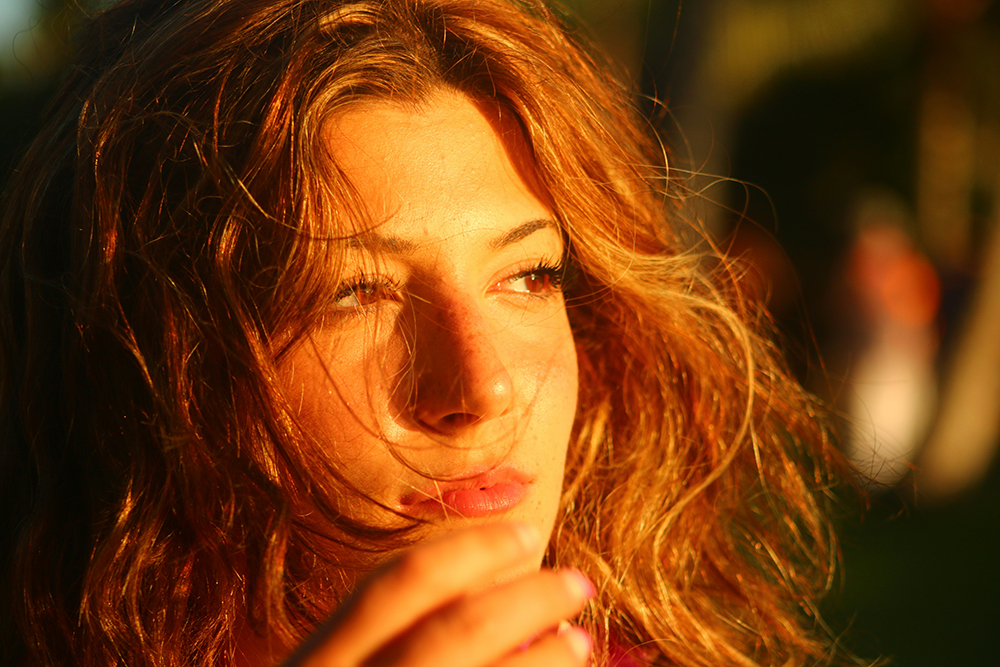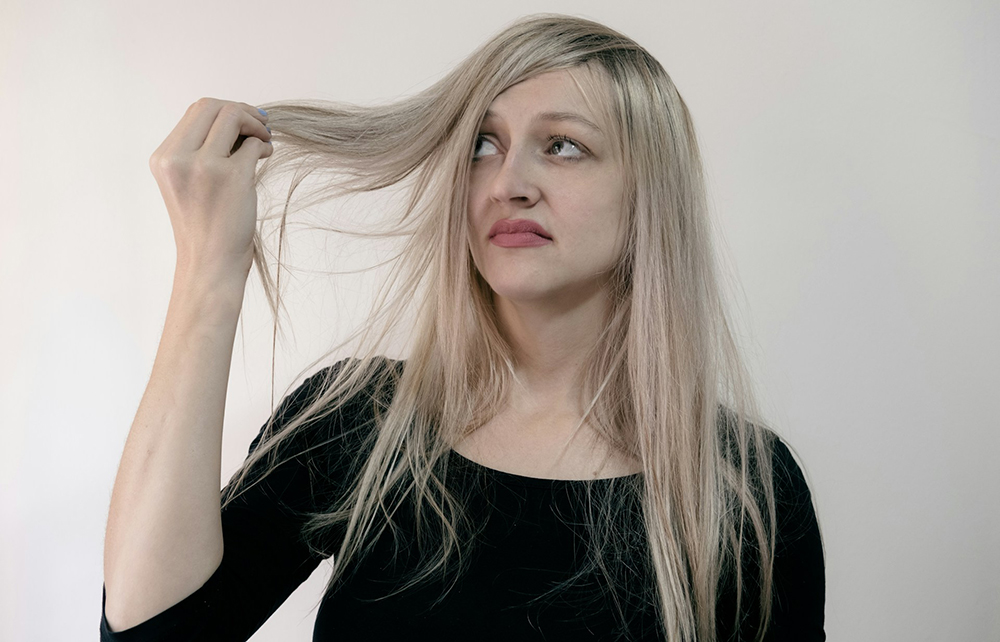Last updated on 4th August 2025 by Sarah Sarsby
Your hair is your crowning glory and taking care of it should be a top priority. Whether it’s the sun’s harsh UV rays or the chemical treatments we use to alter our hair, both can cause significant damage. In this guide, we will discuss how to protect your hair from sun and chemical damage and provide tips on maintaining healthy, beautiful hair.

*This post contains some affiliate links. This means, at no extra cost to you, I earn some commission if you purchase a product through my link. All thoughts are my own, though, as always. If you want to find out more, visit my affiliate disclosure page*
How to spot and prevent sun-damaged hair
Extended sun exposure can significantly impact your hair, leaving it dry, fragile and lacking in both shine and elasticity. Here’s how to recognise sun-damaged hair and ways to prevent further harm:
Indicators of sun-damaged hair:
- Dryness: The sun depletes the hair of its natural moisture, leaving it feeling dry, brittle and prone to breakage.
- Colour fading: UV rays can break down of the pigments in colour-treated hair, causing it to lose its vibrancy and fade faster.
- Lifted cuticles: Sun exposure can cause the outer layer of the hair to lift, leading to increased moisture loss and rough, less smooth strands.
- Frizz: With moisture lost from the cuticle damage, the hair becomes more susceptible to frizz and tangling.
- Split ends: Prolonged exposure to the sun weakens the hair shaft, causing ends to split.
- Loss of flexibility: Sun-damaged hair loses its natural elasticity, which can result in breakage when the hair is stretched.
- Brassy hues: Sun exposure can give hair an unwanted yellow or brassy tint, especially in lighter shades.
How to protect your hair from sun damage:
- Wear a hat: Covering your hair with a hat or scarf is a simple way to shield it from direct sunlight.
- Limit sun exposure: Avoid prolonged sun exposure, especially during peak hours.
- Use leave-in conditioner: Choose a leave-in conditioner with UV protection to hydrate and defend your hair from the sun, such as the Revlon Equave Hydro Nutritive Detangling Leave-In Conditioner, which detangles, controls frizz, prevents colour fading, and protects hair from heat and environmental stressors.
- Wear protective hairstyles: Braids, buns, and ponytails can shield your hair from the sun while also reducing tangling.
- Hydrate and maintain a healthy diet: Drink plenty of water and eat foods rich in omega-3 fatty acids to ensure your hair stays nourished.
How to repair sun-damaged hair:
- Trim regularly: Cut off the most damaged ends to prevent further breakage.
- Deep conditioning: Use a deep conditioning mask weekly with nourishing ingredients like keratin, argan oil, or shea butter. The Fanola Keraterm Mask is perfect for this. It contains keratin and shea butter, which work to detangle and hydrate the hair while combating frizz.
- Hydrate: Drink water to keep your hair hydrated and apply oils like jojoba, grapeseed, or argan to seal in moisture. The Farmavita Argan Sublime Absolute provides instant hydration while repairing and nourishing hair, leaving it with a healthy, silky shine.
- Limit heat styling: Avoid heat tools when your hair is already sun-damaged and use a heat protectant beforehand if you do choose to use heat tools. The Osmo thermal defence spray protects hair from UV rays, while providing the hair with hydration and controlling frizz.
Chemical hair treatments: How they affect your hair, and how to prevent damage
Chemical hair treatments like colouring, straightening, and perming can transform your client’s hair, but if not done with the right precautions, they can cause long-term damage. Here’s a breakdown of the different chemical hair treatments and how to prevent damage.

1. Hair colouring:
The colouring process involves applying chemicals to change the hair’s natural or artificial colour. These chemicals open up the hair cuticle to allow pigments to enter, but frequent colour applications can weaken the hair structure, making it brittle and more prone to damage.
Ways to minimise damage:
- Go for gentle dyes: Choose dyes that are ammonia-free or semi-permanent, as they tend to be less harsh on the hair. Here you can find a wide range of professional semi-permanent hair colours.
- Colour-safe hair care: Use products that are designed for colour-treated hair to lock in hydration and preserve your colour, such as the Fanola Wonder Color Locker Range, which enhances and amplifies the hair colour, prolonging its results, while providing the hair with enhanced care, hydration and protection.
2. Chemical relaxing or straightening:
Relaxers work by using chemicals to break the natural bonds in curly or wavy hair to straighten it. While this process can create sleek, straight hair, it can also cause the hair to lose its strength, leading to dryness and potential breakage.
How to protect your hair:
- Avoid over-processing: Never apply a relaxer to hair that’s been previously treated, as this can result in further damage.
- Hydrate and moisturise: After the process, nourish your hair with leave-in conditioners or masks to replenish moisture. The Farmavita Hydrate Velvet Mask provides intensive care and moisture balance, leaving the hair soft and smooth.
3. Perming:
Perming involves using chemicals to break bonds in the hair and reshape it into curls or waves. While this process can create long-lasting curls, it can also leave hair dry, porous and more prone to frizz if not carefully maintained.
Preventing damage:
- Post-perm care: Use curl-defining creams and avoid excessive brushing to maintain the curl shape and prevent frizz. For this, we recommend the Fanola Fantouch Curl Defining Cream, which defines curls, controls frizz, and boosts hydration.
- Hydrate to maintain elasticity: Keep your curls moisturised with lightweight conditioners to ensure they stay flexible and healthy.
4. Bleaching:
Bleaching is one of the most intensive chemical treatments, using strong chemicals to remove the natural color from the hair. This process opens the hair cuticle and can lead to severe dryness, breakage and lack of elasticity.
How to reduce damage:
- Incorporate bond-protecting products: Use bond-repairing treatments during the bleaching process to minimise structural damage. Here you can find a whole range of hair bonding and bond repairing products.
- Careful aftercare: Avoid heat styling after bleaching and use products like purple shampoo to combat brassiness while maintaining moisture. The Fanola Wonder No Yellow Shampoo is ideal for this as it neutralises yellow tones and restores hair shine, while softening and smoothing the hair, leaving a cool, vibrant finish.
By following these guidelines, you can ensure that your hair remains vibrant and healthy, even with the use of chemical treatments. Protect your hair by maintaining a good routine and using the right products.


I noticed such a drastic change in my hair when I had a lot of bleach in it, especially in the sun. It’s so much healthier now, so I look forward to using some of these care tips in the summer to keep it looking nice!